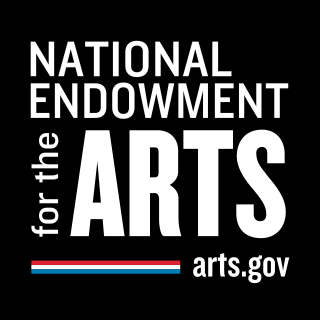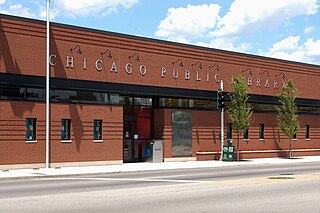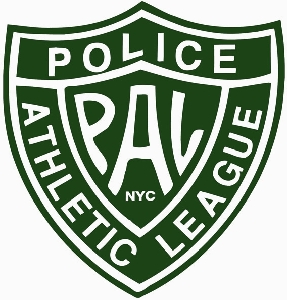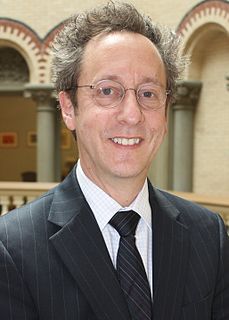
The Loop, one of Chicago's 77 designated community areas, is the central business district of the city and is the main section of Downtown Chicago. Home to Chicago's commercial core, it is the second largest commercial business district in North America and contains the headquarters and regional offices of several global and national businesses, retail establishments, restaurants, hotels, and theaters, as well as many of Chicago's most famous attractions. It is home to Chicago's City Hall, the seat of Cook County, and numerous offices of other levels of government and consulates of foreign nations. The intersection of State Street and Madison Street, located in the area, is the origin of the address system of Chicago's street grid. Most of Grant Park's 319 acres (1.29 km2) are in the eastern section of the community area. The Loop community area is bounded on the north and west by the Chicago River, on the east by Lake Michigan, and on the south by Roosevelt Road, although the commercial core has greatly expanded into adjacent community areas.

The National Endowment for the Arts (NEA) is an independent agency of the United States federal government that offers support and funding for projects exhibiting artistic excellence. It was created in 1965 as an independent agency of the federal government by an act of the U.S. Congress, signed by President Lyndon B. Johnson on September 29, 1965. The foundation consists of the National Endowment for the Arts, the National Endowment for the Humanities, the Federal Council on the Arts and the Humanities, and the Institute of Museum and Library Services.

Lethbridge is a city in the province of Alberta, Canada. With a population of 101,482 in its 2019 municipal census, Lethbridge became the fourth Alberta city to surpass 100,000 people. The nearby Canadian Rocky Mountains contribute to the city's warm summers, mild winters, and windy climate. Lethbridge lies southeast of Calgary on the Oldman River.

The New York City Department of Parks and Recreation, also called the Parks Department or NYC Parks, is the department of the government of New York City responsible for maintaining the city's parks system, preserving and maintaining the ecological diversity of the city's natural areas, and furnishing recreational opportunities for city's residents and visitors.

Beverly, officially Beverly Hills, is the 72nd of Chicago's 77 community areas. Located 12 miles (19 km) from the Loop, it is on the city's far south side. Beverly is considered part of the Blue Island Ridge, along with the nearby community areas of Morgan Park and Mount Greenwood, and Washington Heights, and the City of Blue Island. As of 2018, Beverly had 20,437 inhabitants.

East Flatbush is a residential neighborhood in the New York City borough of Brooklyn. East Flatbush is bounded by Crown Heights and Empire Boulevard to the north; Brownsville and East 98th Street to the east; Flatlands, Canarsie and the Long Island Rail Road's Bay Ridge Branch to the south; and the neighborhood of Flatbush and Nostrand/New York Avenues to the west. East Flatbush is a predominantly African American neighborhood and has a population of 135,619 as of the 2010 United States Census.

Parks in Chicago include open spaces and facilities, developed and managed by the Chicago Park District. The City of Chicago devotes 8.5% of its total land acreage to parkland, which ranked it 13th among high-density population cities in the United States in 2012. Since the 1830s, the official motto of Chicago has been Urbs in horto, Latin for "City in a garden" for its commitment to parkland. In addition to serving residents, a number of these parks also double as tourist destinations, most notably Lincoln Park, Chicago's largest park, visited by over 20 million people each year, is one of the most visited parks in the United States. Notable architects, artists and landscape architects have contributed to the 570 parks, including Daniel Burnham, Frederick Law Olmsted, Jens Jensen, Dwight Perkins, Frank Gehry, and Lorado Taft.
Lois Weisberg was the first Commissioner of Cultural Affairs for the City of Chicago, from 1989 until January 2011.

Garfield Ridge is the 56th of Chicago's 77 community areas. Located 10 miles (16 km) from the Loop, it is on the city's far southwest side. As of 2017, the area had 36,396 inhabitants.

Washington Heights is the 73rd of Chicago's 77 community areas. Located 12 miles (19 km) from the Loop, it is on the city's far south side. Washington Heights is considered part of the Blue Island Ridge, along with the nearby community areas of Beverly, Morgan Park and Mount Greenwood, and the village of Blue Island. It contains a neighborhood also known as Washington Heights, as well as the neighborhoods of Brainerd and Fernwood. As of 2017, Washington Heights had 27,453 inhabitants.

The Chicago Cultural Center, opened in 1897, is a Chicago Landmark building operated by Chicago's Department of Cultural Affairs and Special Events that houses the city's official reception venue where the Mayor of Chicago has welcomed presidents and royalty, diplomats and community leaders. It is located in the Loop, across Michigan Avenue from Millennium Park. Originally the central library building, it was converted in 1977 to an arts and culture center at the instigation of Commissioner of Cultural Affairs Lois Weisberg. The city's central library is now housed across the Loop in the spacious, postmodern Harold Washington Library Center opened in 1991.

The Harold Washington Library Center is the central library for the Chicago Public Library System. It is located just south of the Loop 'L', at 400 S. State Street in Chicago, in the U.S. state of Illinois. It is a full-service library and is ADA compliant. As with all libraries in the Chicago Public Library system, it has free Wi-Fi internet service. The building contains approximately 756,000 sq ft (70,200 m2) of work space. The total square footage is approximately 972,000 sq ft (90,300 m2) including the rooftop winter-garden penthouse. It is named in honor of Harold Washington.

Sister Cities International (SCI) is a nonprofit citizen diplomacy network that creates and strengthens partnerships between communities in the United States and those in other countries, particularly through the establishment of "sister cities"—broad, long-term agreements formally recognized by civic leaders. Its mission is to "build global cooperation at the municipal level, promote cultural understanding and stimulate economic development". A total of 1,800 cities, states, and counties are partnered in 138 countries worldwide.
Chicago Artists Coalition is a non-profit artist service organization based in Chicago and dedicated to building a sustainable marketplace for entrepreneurial artists and creatives. As pioneers in advocacy and professional development, it capitalizes on the intersection of art and enterprise by activating collaborative partnerships and developing innovative resources. The Chicago Artists Coalition is committed to cultivating groundbreaking exhibitions and educational opportunities, and to building a diverse community of artistic leaders that defines the place of art and artists in our culture and economy.

The Asian American Arts Centre (AAAC) is a non-profit organization located in Chinatown in New York City. Founded in 1974, it is one of the earliest Asian American community organizations in the United States. The Arts Centre presents the ongoing developments between contemporary Asian & Asian American art forms and Western art forms through the presentation of performance, exhibitions, and public education. AAAC's permanent collection, which it has accumulated since 1989, contains hundreds of contemporary Asian American art works and traditional/folk art pieces. The organization also has an Artists Archive which documents, preserves, and promotes the presence of Asian American visual culture in the United States since 1945. This includes the East Coast, especially the greater New York area; the West Coast; and some artists in Canada, Hawaii, and overseas. The artists include Asian Americans producing art, Asian artists who are active in the United States, and other Americans who are significantly influenced by Asia. Pan-Asian in outlook, the Arts Centre's understanding of ‘Asia’ encompasses traditions and influences with sources ranging from Afghanistan to Hawaii.
The Maryland Department of Commerce is a government agency in the state of Maryland in the United States. Although it was originally founded in 1884, the department came to be recognized as the Department of Commerce in 2015.

The Police Athletic League (PAL) is an independent, nonprofit youth development agency in New York City. PAL is funded by a combination of private donations and public funding sources and is a designated charity of the New York City Police Department (NYPD). Robert M. Morgenthau, the late former New York County District Attorney, served as Chairman of the Board of Directors beginning in 1963. PAL is open to all New York City children.

Phil Weinberg is the Deputy Chief Academic Officer for Teaching and Learning at the New York City Department of Education. In this role, Weinberg oversees initiatives to strengthen instruction and enhance student learning across the City's 1600+ district schools.
Tom Finkelpearl is an American arts promoter, former museum director, and former Commissioner of the New York City Department of Cultural Affairs. He was appointed in 2014 by the New York City mayor, Bill de Blasio, and served through the end of 2019.
Edra Soto is a Chicago-based multidisciplinary artist, curator, educator and co-director of the artist-run outdoor project space The Franklin.













